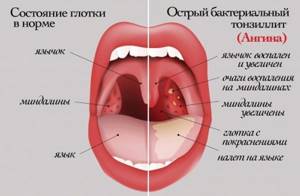Fever in a child can be a sign of many diseases. Not necessarily viral or bacterial. The baby’s immune system responds to any irritants that enter the body. The main manifestation of the child’s body’s struggle with unfavorable factors is hyperthermia, rising to high values: 39 degrees and above. For parents, this is a serious indicator of the baby’s health, which is worth paying close attention to. What should a mother do if her child’s temperature of 39°C has not subsided for three days?
Measurement Features
First of all, it is necessary to take into account the difference in temperature standards for children of different ages. In newborns, the thermoregulation system is not yet sufficiently developed, so temperature fluctuations are typical for infants. They are associated with the adaptation period of the body to new conditions. The temperature at which the baby was in the womb was about 38 degrees. After birth, his body has to quickly adapt to new conditions.
Unstable temperature is the norm for newborns and infants. However, if the fever reaches such values for three days, the first thing parents need to do is consult a doctor.
Older children react with the appearance of hyperthermia to viruses and bacteria entering the body. Inflammation begins, causing a sharp increase in thermometer readings to 39°C and above.
Influence of external factors and natural causes
In children, more often than in adults, an increase in temperature to 38-38.5 occurs for natural reasons. One of these is teething. It is especially difficult for children to experience the appearance of chewing molars and fangs.
If they go one after another, then hyperthermia can persist for a long time. As soon as the tooth erupts, the baby’s condition will immediately return to normal.
The baby's body temperature may increase due to overheating. Of course, there is little chance that hyperthermia will persist for 5 days. But if overheating occurs regularly, then this is quite possible, due to an imperfect thermoregulation system in children under one year old.
What and how to measure
The readings of mercury thermometers are considered the most accurate. It is convenient for a baby to use a pacifier thermometer. Doctors recommend adhering to the basic rules: • Temperature is measured in the armpits, inguinal folds, mouth or rectum. In the intestines it is 1 degree higher. If its values have reached 39 degrees for several days, measure every 2 hours. This way you won’t miss the moment when the fever needs to be reduced; • Measurements should be carried out in a calm state. Screaming, crying, whims, activity can significantly affect the final result; • If you are using a pacifier thermometer or an electronic oral thermometer, measure one hour before or one hour after meals. Warm foods and drinks increase the values by about 1 degree.
Advice. If your baby has a fever of up to 39°C for several days, you should not take measurements with a rectal thermometer. Choose more gentle methods. There is absolutely no need for a child in this state to worry too much.
Dr. Komarovsky - when a child needs to lower his temperature
Dr. Komarovsky believes that an increase in the baby’s body temperature indicates that his immune system is independently fighting the infection. Don't bother her! Measures must be taken if the child begins to weaken, refuses to drink, and the fever has persisted for 3 days in a row.
The first step is to ensure a normal level of humidity in the room, and not run headlong to the nearest pharmacy and sweep all antipyretic drugs off the shelves.
You need to know that fever can be infectious and non-infectious. The most common cases are non-infectious fevers, that is, overheating. The reason for this is the strong wrapping of the child and high air temperature.
Typically, in this case, there are no symptoms other than fever. Therefore, you must first ventilate the room well, do a wet cleaning and dress the child in light clothing. Soon the body temperature will return to normal.
Infectious fever is divided into
Viral, bacterial.
Viral fever, usually at 38°C, goes away on its own and lasts for 1 day. The use of antipyretics in this case is not advisable. Bacterial fever, with an indicator of 38-39°C, is always accompanied by a specific symptom. For example, if a child has diarrhea and a fever of up to 39°C, then most likely there is an intestinal infection. With a sore throat, fever is accompanied by a sore throat. As a rule, with angina, body temperature can even exceed 39°C.
However, you should know that a urinary tract infection may not be accompanied by any symptoms other than a fever with a thermometer reading of 38°C or higher, and lasts for more than one day.
How can parents differentiate a viral fever from a bacterial one? With a viral infection, the baby’s skin may acquire a bright pink tint, and with a bacterial infection, it becomes pale. Red ears and high temperature up to 39°C. With such symptoms, there is no need to worry - this is a normal reaction of the body. But, if there is no fever, and the baby becomes lethargic, then you need to urgently call an ambulance. Fever is not accompanied by any symptoms and lasts for 1 day or more - this is not a dangerous phenomenon, however, you need to call a doctor to see the patient.
Possible causes of hyperthermia
A temperature of 39 degrees is called hyperpyrexic; it requires quick determination of the reasons for its occurrence and mandatory consultation with a pediatrician.
1. Infectious diseases. These include influenza, ARVI, sore throat, chicken pox, rubella. The increase in the first three days is associated with the body’s production of a protective substance – interferon. It helps the child cope with the disease. According to medical research, the largest amount of interferon is produced on the third day of illness. The higher the heat during this period, the higher the body's defenses become. It is difficult for a child to tolerate hyperthermia, therefore, if a viral or bacterial infection is suspected, it is necessary to call a doctor and reduce the thermometer readings in accordance with his instructions; 2. Teething. The appearance of new teeth, especially the first ones, is often accompanied by fever. It can last three days, reaching 39 degrees. Teething can be distinguished from infectious diseases by the following signs: swelling of the gums, strong salivation, and the baby’s refusal to breastfeed or solid food. If hyperthermia is associated with teeth, it must be reduced using medication or physiological methods; 3. Heat stroke. Children in their first year of life are more likely to overheat. It appears as a result of prolonged exposure to the sun or excessive wrapping. Overheating occurs suddenly, in the late afternoon. The temperature does not last long, decreasing on the second day. Indirect signs by which heatstroke can be determined: difficulty breathing, rapid heartbeat. If the child overheats, he should be placed in a cool room, given water, and be sure to consult a doctor.
Pediatricians agree: if you don’t interfere with the body, it can defeat the infection on its own in three days. Therefore, hyperthermia, which continues for the third day, is not yet a reason to run to the pharmacy for antipyretics.
Exceptions are babies under one year old and children suffering from disorders of the nervous system or heart. Their fever can cause febrile seizures. They arise not as a consequence of hyperthermia, but because of its sudden onset. If there is no such reaction, do not rush to give medications. After all, temperature has not only a negative effect on the child’s body.
Possible diseases
A temperature of 39 in a child (without symptoms or with additional signs) may indicate various pathologies. The table shows the reasons why a high rate is accompanied by symptoms.
| Name | Description |
| Diseases of the oropharynx of a viral and bacterial nature - sore throat, pharyngitis, laryngitis | In addition to the elevated temperature, redness and pain appear in the throat area. |
| Respiratory viral infections - influenza | Additionally, there is nasal congestion, lethargy, and lack of appetite. An increase in temperature to 39 degrees is most often observed with the flu. The common cold is not accompanied by a high rate |
| Intestinal infection | An increase in the indicator may occur in a child due to intolerance to a certain product or food poisoning |
| Appendicitis or serious gastrointestinal pathology | Acute pain appears in the abdominal area |
| Viral infections – smallpox, rubella, measles | A rash on the skin is accompanied by a high fever. Most often, the rash spreads from top to bottom |
| Diseases of the genitourinary organs – cystitis, pyelonephritis | Along with high temperature, urination is impaired. A child under 1 year of age behaves poorly and cries while emptying the bladder. Older children complain of pain in the abdominal cavity, discomfort may radiate to the lower back. Additionally, there is a change in urine color |
| Otitis | Severe discomfort in the ear area. The child constantly touches the place and tilts his head |
| Pneumonia | Shortness of breath appears along with high temperature. Additionally, the lips or the skin around them turn blue |
| Angina | The appearance of plaque on the tonsils, enlarged lymph nodes, severe pain in the throat |

A child may have a high fever without additional symptoms. This condition is rare, but not an exception.
Signs are associated with the following reasons:
- Neoplasm. The temperature rises for a long time, at first the child is not bothered by anything. But then lethargy, loss of appetite, and fatigue arise. Additionally, weight decreases and the skin turns pale.
- Autoimmune pathologies – rheumatoid arthritis, lupus erythematosus.
- Infections – pneumococcal otitis media, bacterial pneumonia.
- Hormonal imbalance is a condition typical of adolescence.
- Impaired functioning of the thyroid gland (hyperthyroidism). Hormones are produced in greater quantities. If the disease is advanced, a thyrotoxic crisis occurs, in which the elevated temperature can persist for a long time - from 1 week to several months.
- Reduced hemoglobin levels (anemia).
- Diabetes.
Pros and cons of high temperature
Heat is a protective reaction inherent in nature. Against this background, phagocytosis increases - the ability of immune cells to neutralize all harmful substances.
Interferon is also actively produced, fighting bacteria and viruses. Intense heat reduces appetite and motor activity, directing all body systems to fight the disease. The main disadvantage of hyperthermia is the rapid loss of fluid. It causes blood thickening, reduces the absorption of medications, and can significantly worsen the condition.
Therefore, the first rule for parents when their child has a prolonged fever is to give him water. You need to drink frequently, at least five times a day, in small portions. Preferably warm water. It is recommended to feed infants more often during the day; bottle-fed children can be given water from a syringe without a needle. When parents reduce the fever, they interfere with the body's natural process, which is aimed at fighting the disease. This does not mean that a child’s high temperature for the third day is not a cause for concern and nothing can be done. Pediatricians recommend reducing fever if the following indications are present: • Temperature 39 lasts for three days or more; • Difficulty breathing, retraction of the fontanel in newborns; • Diseases of the nervous system, heart, or previous seizures.
You can fight the fever yourself. This must be done correctly, since incorrect manipulations can further harm your health.
Symptoms
Acute respiratory infections are manifested by the following symptoms:
- Weakness, headache.
- Pain in muscles and joints without specific localization.
- Increased body temperature.
- Rhinitis (runny nose).
- Cough – dry or with sputum production.
Conjunctivitis (inflammation of the mucous membrane of the eye) distinguishes adenovirus infection; Acute diseases of the respiratory system may be accompanied by enlarged lymph nodes and hepatomegaly (enlarged liver). If the temperature is 37 °C or higher for three days, the patient’s condition does not improve, and there is a possibility of developing complications of the pathological process.
The course of intestinal infections is accompanied by:
- weakness, dizziness, headache;
- nausea, lack of appetite;
- vomiting, diarrhea;
- abdominal pain of various localizations.
With rotavirus infection, in addition to intestinal manifestations, the throat becomes red, patients are worried about pain when swallowing, and a runny nose. A temperature of 38 °C in a child for three days without a tendency to improve requires consultation with a pediatrician or pediatric infectious disease specialist.
If a patient has a fever for three days, and then a rash begins, this is a characteristic description of the clinical picture of sudden exanthema (roseola). A feature of the disease is the absence of any symptoms other than fever and slight weakness. Roseola is considered a pathology of childhood. The elevated temperature persists for 3 to 5 days; some time later (from 10 to 20 hours) after returning to normal numbers, a rash appears in the form of dots, small pink spots. The child’s health is usually satisfactory, the rash disappears after a few days.
Osteomyelitis is characterized by swelling and pain in the area of inflammation, limited mobility of the affected limb, as well as an intoxication syndrome: chills, headache, severe weakness. Symptoms of intoxication are present in all types of purulent infection. When the lesion is located in the lungs, a cough with purulent sputum is observed.
What should parents do?
There are two ways to reduce temperature: with medications and physiological methods.

Pediatricians recommend using drugs based on paracetamol or ibuprofen. They help get rid of fever on the first day and quickly normalize the condition. These medications are equally effective, but have different contraindications for use. Before starting use, you should consult your doctor. He will tell you the exact dosage depending on the medicine, age, weight of the child, and characteristics of the disease.
The drugs are available in different forms: suppositories, tablets, syrups. Medicines in the form of suppositories are recommended for children from 1 month. up to six months. Their effect occurs within 30-40 minutes. and lasts longer than after taking tablets or syrup.
Older children are allowed antipyretic syrup. Please note: almost all syrups contain dyes, flavors, and flavoring additives. They may cause an allergic reaction. If your baby has a tendency to allergies, it is better to use rectal suppositories or a tablet form of the medicine.
Tablets can be given to children from 3 years of age. By this age, the child is able to swallow them whole without choking. Syrups and tablets act quickly, within 15-20 minutes. after reception.
Advice. If fever occurs due to viral infections, use paracetamol-based medications. Medical studies have shown its high effectiveness in treating such diseases. Paracetamol relieves fever for 2-4 hours, allowing the child to more easily cope with the disease.
You cannot use one drug constantly. If you need to take it frequently in one day, try to alternate medications in different forms and with different active ingredients. Remember: analgin and aspirin are contraindicated for children to reduce fever. They can cause serious complications.
Body examination
If a child has a temperature of 38 for 5 days, then parents should think about examination. First you need to consult a pediatrician. For adults, the first specialist will be a therapist. Diagnosis of the body is carried out in stages until the cause of hyperthermia is identified.
- Inspection. The very first thing a doctor will do when a patient complains of prolonged hyperthermia is to examine and interview. All your symptoms will be recorded on the card. In the future, taking an anamnesis will help make a correct diagnosis.
- Analyzes. Diagnostics necessarily includes laboratory tests. A urinalysis may show the presence of salts, inflammation and bacterial cells. This will make it possible to judge the condition of the urinary system. A blood test will show the health of the body as a whole. A test for sugar, a coagulogram, and determination of antibodies is required.
- Ultrasound scanning. It is designed to evaluate the functioning of internal organs, mainly the abdominal cavity. It is important to remember that ultrasound requires some preparation.
- Tomography (MRI or CT). This manipulation allows you to examine not only the organs, but the bone structure. This diagnostic method can be considered one of the most accurate. With its help you can learn about neoplasms.
- Additional examinations: ECG, fluorography, x-ray. The need for these procedures is assessed by the doctor in accordance with the patient’s condition. If all the results of the diagnostics are good, and hyperthermia continues to persist, then a suspicion of hypothalamic syndrome arises. When it occurs, there is a disruption in the functioning of the pituitary gland and hypothalamus. Because of this, the body cannot regulate its own body temperature. In people with this disease, hyperthermia may persist for many years without developing any further signs of illness.
If the body temperature remains at 38-39 degrees, then it must be reduced. For this, doctors recommend using well-known antipyretics:
- Ibuprofen
- Paracetamol
- Diclofenac
- Ketorolac
- Nimesulide
Depending on age and individual characteristics, a certain dosage is selected. Doctors recommend lowering the temperature of children from the thermometer to 38.5 degrees. If a child is prone to convulsions or has a birth injury, then it is necessary to use antipyretics from 37.5 degrees.
A prolonged increase in body temperature negatively affects the functioning of the liver and spleen, disrupts blood circulation, promotes thrombus formation, and makes the work of the heart muscle more difficult. If within 5 days the patient’s condition does not return to normal, then you should definitely consult a doctor.
May 2, 2020 Yulia Astafieva
Causes
Infectious fever is the most common type of fever. Often it is the earliest sign of the disease, in some cases it is the only one. The duration of maintaining high temperature values and the type of temperature curve are assessed. Fever during infections is a typical process controlled by the body, which is triggered by pyrogens (biologically active substances) of infectious origin. Once in the body, they stimulate the production of endogenous or secondary pyrogens (cytokines).
Fever includes:
- stage of temperature rise;
- stage of stable temperature values;
- stage of temperature reduction.
A temperature of 38 °C lasting three days in an adult or child may indicate an infection of viral or bacterial etiology with different localization of the lesion - in the respiratory tract, digestive system, etc. A high incidence is inherent in acute respiratory infections (ARI), occurring in the form of tracheitis , bronchitis and pneumonia. Fever is also observed in acute intestinal infections (shigellosis, salmonellosis), sudden exanthema. There are diseases in which an increase in body temperature becomes a striking difference in the clinical picture - malaria, typhoid fever, a group of hemorrhagic fevers. Mycotic or fungal infections occur with high fever - actinomycosis, aspergillosis, candidiasis.
The cause of a temperature of 39 °C, lasting three days in a child and an adult, can be acute and chronic purulent-inflammatory diseases - osteomyelitis, otitis, abscesses of the lungs, pleural cavity, liver.
Among non-infectious pathologies, fever for 3 days or more is typical of systemic connective tissue lesions (systemic lupus erythematosus, rheumatoid arthritis, etc.).
A temperature of 37 °C on the third day is observed with autonomic dysfunction and refers to manifestations of thermoneurosis.
Physiological methods
One of them is rubbing.
Place the baby on the bed, undress and dry with a soft towel moistened with warm water. You need to treat the entire body, starting from the neck area and moving down. Do not wrap the child after wiping, the temperature will quickly rise again. Another way is to drink plenty of warm drinks. It causes increased sweating. Moisture evaporating from the surface of the skin reduces heat. Drinking small amounts of fluid throughout the day also helps prevent dehydration.
Some doctors advise applying ice to your baby's armpits or groin folds. This method is only permissible for a short time in older children. A baby's delicate skin can quickly get frostbite.
Common bad advice
1. If a child has a fever or chills, he needs to be warmed up.
Wear socks, a sweater, and cover with a warm blanket. It is a myth. On the contrary, wrapping it up leads to overheating of the internal organs and can cause a deterioration in the condition. To reduce fever, leave your baby wearing lightweight, loose clothing; 2. It is necessary to close all the windows to prevent it from blowing. Another common but erroneous belief. To improve your well-being, be sure to ventilate the room and provide access to fresh air. Doctors recommend reducing the temperature in the room where the child is located to 18-20 degrees; 3. The best rubdown is using vodka or vinegar. Indeed, alcohol-containing liquids help to sharply lower the thermometer readings. But only adults can do rubdowns with their help. Vodka and vinegar can penetrate the child’s body through the pores on the skin. As a result, the baby will receive severe intoxication; 4. Swimming helps relieve fever. The opinion is partially correct. If the child is active, the fever appears due to teething - a shower will really help. Don't get carried away with long splashes in the bathroom. A warm shower lasting a few minutes is enough. Afterwards, dry your baby thoroughly to prevent colds. If the cause of the high temperature is influenza, sore throat, or ARVI, you should not bathe the child. Another common mistake is self-administration of antibiotics. Many parents, frightened by high thermometer readings, rush to begin what they believe is effective treatment. It is strictly prohibited to do this without consulting a doctor. Improper treatment can greatly harm your health.
Treatment
Antibacterial drugs (ampicillin, ciprofloxacin) are used to treat respiratory infections of a bacterial nature. These drugs do not work on viruses.
The patient should not be overcooled; it is necessary to drink plenty of warm drinks (tea, fruit juice, compote), and rinse the nose with saline solution for a runny nose. Also, depending on the symptoms, sputum thinners (mucolytics) and antipyretics (paracetamol) can be used.
In case of intestinal infections, a dangerous condition, in addition to intoxication, is dehydration, therefore oral rehydration (rehydron) and intravenous administration of saline solutions (Trisol, Chlosol, Acesol) are performed. Antibiotics (azithromycin, cefixime), intestinal antiseptics (nifuroxazide), sorbents (Enterosgel), probiotics (Linex) are prescribed. Be sure to follow a diet excluding sweets, whole milk, and rich meat broths.
In the case of purulent-inflammatory pathologies, antibiotics (lincomycin, cefotaxime, ciprofloxacin) and detoxification therapy are required. Surgical treatment includes opening the lesion, removing purulent masses, drainage after washing with antiseptic solutions.
Fever is a common companion to various childhood diseases. Usually its values decrease 2-3 days after the onset of the disease. Sometimes a child’s high fever lasts for more than 3 days. Since it is a sign of many diseases, parents need to accurately determine the cause of its occurrence.
When to call an ambulance
Urgent medical intervention is necessary if: • A fever of more than 39 degrees does not subside for three days; • The thermometer readings are off the charts in a newborn or infant; • Presence or exacerbation of chronic diseases due to fever; • The appearance of febrile convulsions, fainting, difficulty breathing, shortness of breath.
Prolonged high fever in a child is not a reason for self-medication. The cause of fever above 39 degrees can be various diseases. Try to reduce your temperature using available methods and be sure to consult a doctor to make a correct diagnosis.
Video “What to do if a child has a temperature of 39 without symptoms”
Dr. Komarovsky gives his advice for high body temperature without symptoms.
Do you have any questions? Specialists and readers of the KROHABABY website will help you ask a question
Source
An increase in body temperature is associated with physiological or pathological reasons. Parents may find their child has a high rate without symptoms. But an increase with additional characteristics is allowed. A value of 39 degrees can be dangerous for the child, so you need to start therapy.









